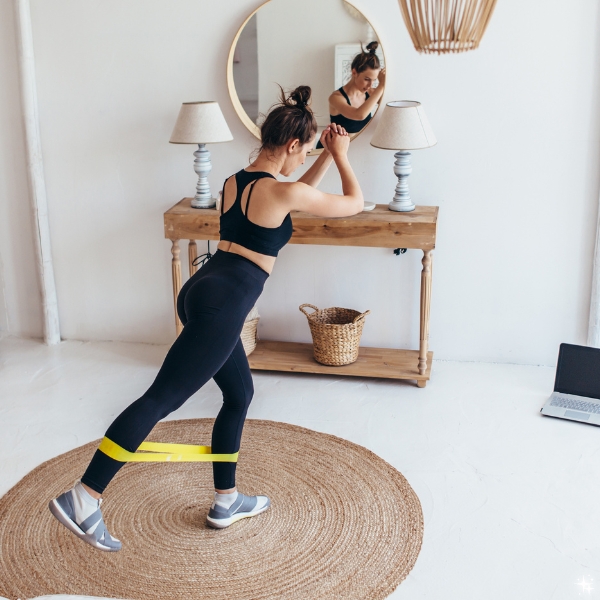Create a Personalized Fitness Plan : How To. Fitness Plan That Works for You! Step-by-Step: How to Create a Fitness Plan Just for You. Transform Your Routine. How to Design a Fitness Plan Tailored to Your Goals.
This site contains affiliate links. For more info, please see our full disclosure.
Creating a personalized fitness plan is one of the best ways to stay consistent, reach your goals, and feel empowered about your health journey. It’s important to design a plan that fits your lifestyle, goals, and preferences, rather than just following a one-size-fits-all routine.
Whether you’re just starting out or looking to level up your fitness, a plan made specifically for you can make all the difference. Let’s dive into why a personalized fitness plan is so effective, how to create one that works for you, and how to stay motivated without feeling overwhelmed.
Why Personalization Is Key
Everyone’s body is different, so your fitness plan should reflect your unique needs. A personalized plan takes into account your fitness level, goals, schedule, and any medical conditions you may have.
According to fitness expert and trainer James Clear, “The key to success is finding a routine that fits into your life, not one that makes you change your life to fit it”. By creating a plan that aligns with your lifestyle, you’re more likely to stay consistent and motivated.
How to Create Your Personalized Fitness Plan
- Set Clear Goals Start by identifying your fitness goals. Do you want to lose weight, build muscle, improve endurance, or simply stay active? Being specific helps you design a plan that targets those areas. For example, if your goal is strength training, focus on exercises like weightlifting or resistance training. If you’re aiming for endurance, include cardio activities like running or cycling. If you’re looking for weight loss, start slow and keep steady to gradually increase the intensity and duration of your workouts.
- Assess Your Current Fitness Level Understanding where you’re starting from is crucial. You don’t need to be in perfect shape to begin, but knowing your strengths and weaknesses will guide your plan. You can do simple tests like timing your run or checking how many push-ups you can do in a minute to gauge your current fitness level. It’s okay to push yourself, but also know that you want to not hurt yourself in the process. Start with stretches to see how far your body can go to start with.
- Choose Exercises You Enjoy The best workout is one you enjoy. If you hate running, don’t force yourself to do it! Try different forms of exercise like swimming, dancing, yoga, or HIIT (high-intensity interval training) to find what excites you. The more you enjoy your workout, the more likely you’ll stick with it. Create playlists and movies you want to listen to and watch while you are doing your workouts.
- Build a Balanced Routine Your fitness plan should include a mix of strength, cardio, flexibility, and rest. This balance ensures you’re working all aspects of fitness and preventing injury. A well-rounded plan might look like this:
- Strength training 2-3 days a week (e.g., weights, resistance bands)
- Cardio 3-4 days a week (e.g., running, swimming, cycling)
- Stretching or yoga at least once a week to improve flexibility
If you’re focusing on running or sprinting as part of your cardio, investing in the right track uniform can improve comfort and performance while helping you stay motivated.
- Start Slow and Gradual. If you’re just starting, don’t overwhelm yourself with a complex plan. Start with shorter sessions and slowly increase the intensity. This prevents burnout and injury while giving your body time to adapt.
- Rest & Sleep. Sleep is so important for your body to recover and heal. This will help your muscles build. If you are always working out without sleep and rest, your body will be torn the whole time. Giving it time to recover is actually when the muscles grow. Also, you will feel so much better doing your workouts as you move forward.
How to Know If It’s Working for You
You’ll know your fitness plan is working if you’re seeing progress toward your goals. This could mean more energy, improved endurance, or visible muscle tone. Be sure to track your progress. You can keep a fitness journal, log your workouts in an app, or take progress photos.
If after a few weeks, you don’t feel stronger, faster, or more energized, it might be time to adjust your plan. Maybe you need more variety or a different challenge. Listen to your body and make changes accordingly.
RELATED: Exercises Under 10 Minutes for a Busy Day
Addressing Injuries and Pain Before You Focus on Fitness
Before diving into a new fitness routine, it’s important to take stock of any existing pain, stiffness, or past injuries. Ignoring these issues and pushing straight into exercise can often make things worse, especially if certain movements place extra strain on vulnerable areas. Understanding how your body responds to movement and being honest about what feels uncomfortable helps you avoid setbacks that can derail your progress early on.
Seeking support ,such as personalized physiotherapy can be helpful if pain is persistent or limiting your range of motion. This kind of guidance can highlight imbalances or problem areas that need attention before training intensity increases. Once discomfort is managed and movement feels more natural, you’re in a much stronger position to build a fitness plan that supports long-term health rather than working against it.
When to Consult Your Doctor or Nutritionist
Before starting any new fitness program, it’s always a good idea to check in with your doctor, especially if you have any pre-existing conditions or health concerns.
A doctor can recommend exercises that are safe for you and advise on how to avoid injury. A nutritionist can also play a key role in your fitness journey by helping you develop a diet that supports your goals, whether it’s building muscle, losing fat, or maintaining energy levels.
What you consume and how you meal plan will make your fitness plan work best for you. You’ll see more visible results if you also adjust your meal plan.
In addition, managing stress and other stressors that might after your mental and emotional well-being will help your mind, body, and soul feel better. Enjoy the process of becoming stronger, healthier, and happier!
Benefits of a Personalized Fitness Plan
A tailored fitness plan keeps you engaged, accountable, and motivated. Since it’s built around your goals, preferences, and schedule, you’re more likely to stick with it.
You’ll also avoid wasting time on exercises that don’t serve your goals, which makes your workouts more efficient. Plus, the more personalized your routine, the more you’ll enjoy the process, which can lead to a lifelong love of fitness!
I found that when I include some type of sports activity, Zumba, or dancing, it helps my energy levels and it also keeps me more motivated to keep my workouts and meal plans going.
Staying Motivated Without Feeling Overwhelmed
Starting a new fitness journey can feel daunting, but take it one step at a time. Break your plan into smaller goals, celebrate little wins, and remind yourself that progress takes time.
It’s okay to have setbacks; just pick up where you left off. Remember, the goal is to feel good and stay consistent, not to be perfect. Give yourself compassion and grace as you go through this meal plan journey.
Once you find your flow and rhythm, you’ll find that your plans become embedded habits and eventually a lifestyle.
What You Really Need To Know : Why You Need To Create a Personalized Fitness Plan
Creating a personalized workout plan is a game changer for achieving your fitness goals. By tailoring your workout routine to your unique fitness level and preferences, you can effectively build muscle and improve your body composition. Whether your focus is on strength training, weight loss, or overall health, a custom workout ensures you’re working efficiently toward your targets.
Incorporating exercises that target both the upper body and lower body will give you a balanced approach to fitness. Use a workout planner to map out your sessions, including the sets and reps you’ll perform each week. Don’t forget to consider your body mass index and body weight to better understand your starting point and track your progress. With consistent effort and a structured training workout program, you’ll find that reaching your goals is not just possible, but enjoyable. Embrace this journey and watch how your own workout plan transforms your health and fitness!









